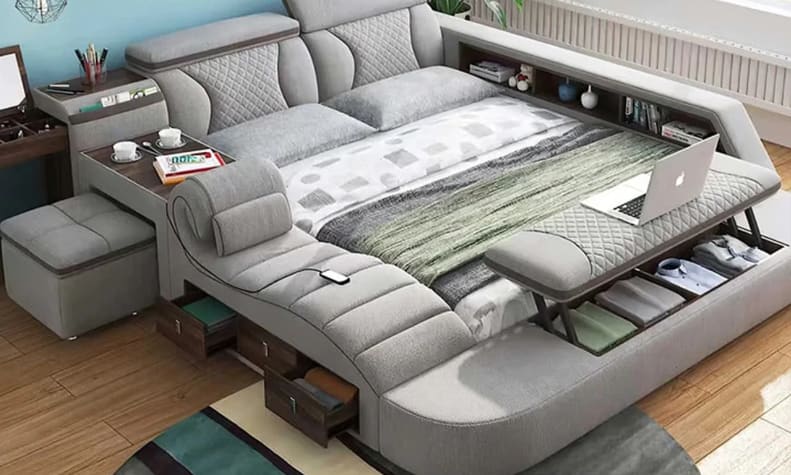Smart Storage Organizer Ideas for Small Homes
A good storage organizer transforms clutter into calm, especially when space is limited. Whether you live in a studio, share a house, or simply want smarter use of rooms, the right mix of storage solutions and habits can make everyday life simpler. This article covers practical methods, furniture choices, and organization tactics suited to modern homes.

Which storage solutions fit different rooms?
Kitchens, bathrooms, bedrooms, and entryways each demand tailored storage solutions. In kitchens, think pull-out pantry shelves, magnetic spice racks, and stackable clear containers that make ingredients visible and accessible. Bathrooms benefit from tiered corner shelves, over-the-door organizers, and slim rolling carts for toiletries. Bedrooms often need under-bed boxes, closet organizers, and drawer dividers to keep clothing and accessories sorted. Entryways do well with wall-mounted hooks, slim benches with cubbies, and tray organizers for keys and mail.
Consider materials and maintenance when choosing solutions. Plastic bins are lightweight and washable; wicker baskets add warmth but may require liners; metal racks are durable in humid areas. Choose clear or labeled containers so items are easy to find, and pick modular pieces that can be repurposed if you move or reconfigure a room.
How to maximize a small space with storage?
Maximizing a small space relies on vertical thinking and multifunctional items. Use wall space for shelves and pegboards, hang pots and pans or hooks for bags, and install floating shelves above desks or beds. Over-the-door organizers reclaim unused vertical real estate, while slim profile furniture keeps walkways clear. For closets, double hanging rods and slim velvet hangers create extra capacity without crowding.
Make the most of awkward spaces: shallow shelves in hallways can hold shoes and small items, while the area above door frames can house seasonal boxes. When floor space is at a premium, prioritize storage that elevates—loft beds with built-in desks or shelving and wall-mounted fold-down tables preserve circulation while adding function.
What organization systems make daily life easier?
Effective organization systems combine sorting, labeling, and routine. Start by categorizing possessions: keep like with like, and create zones for daily activities (work, cooking, dressing). Use labels on bins and drawers, whether printed or hand-written, to reduce decision fatigue. A calendar or command center near the main entrance helps track schedules, keys, and important papers without creating clutter.
Adopt simple routines: a daily five-minute tidying session, a weekly reset for high-traffic areas, and seasonal purges to rotate or donate items that aren’t used. Digital organization matters too—scan important documents and keep a backup to reduce paper accumulation in the home. The goal is repeatable habits that maintain the gains made by your storage organizer.
Can furniture double as storage?
Yes—furniture that doubles as storage is a cornerstone of smart small-space living. Ottomans and benches with internal compartments hide blankets, shoes, or toys while offering seating. Beds with drawers or platforms with built-in storage replace separate dressers and free up floor area. Desks with shelving, sofas with storage chaise sections, and coffee tables with lower shelves keep essentials close without visible mess.
When choosing multifunction furniture, consider dimensions and accessibility: drawers should be easy to open in a tight room, and cushions or doors should allow quick reach. Modular furniture that can be reconfigured (shelving cubes, stackable units) adapts as your needs change. Investing in quality pieces that perform multiple roles often saves money and space over time.
How to keep your home organized long-term?
Long-term organization is about systems and moderation. Limit new acquisitions by applying a one-in-one-out rule for items like clothing or kitchen gadgets. Regularly reassess storage needs—what worked last year might not suit current routines. Store seasonal items in labeled containers and rotate them to avoid overflow in living spaces. Keep frequently used items at eye level and stow seldom-used items higher or lower.
Leverage local services for tasks beyond DIY: professional closet installers, shelving fitters, and furniture assembly services can optimize space faster than trial-and-error. When hiring local services, communicate exact dimensions and desired outcomes to ensure the storage organizer integrates seamlessly. Small investments in quality storage and reliable installation often extend the life of both furniture and organization systems.
Conclusion
A thoughtful storage organizer blends practical storage solutions, clever furniture choices, and steady organization habits to make small spaces feel comfortable and functional. By prioritizing vertical storage, multifunctional furniture, clear labeling, and routine maintenance, you can create a home that supports daily life rather than complicating it. With a few strategic changes, even compact living can be orderly and inviting.






